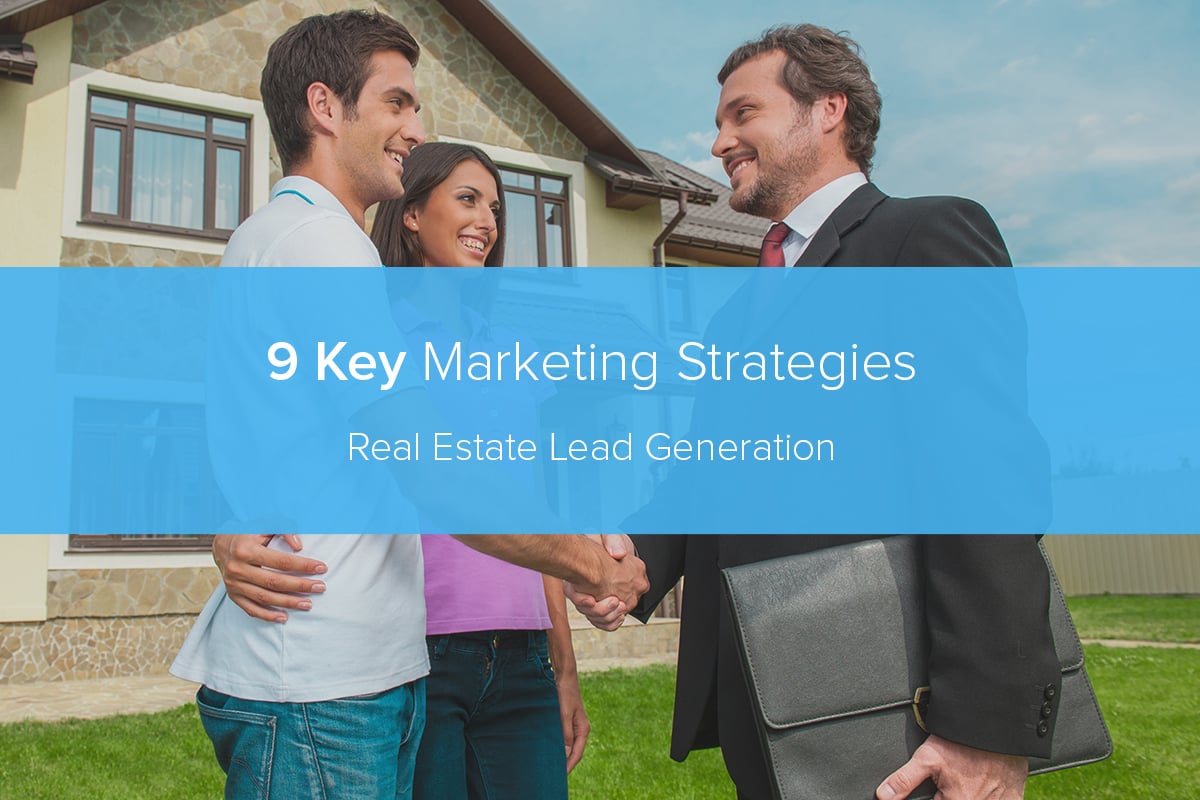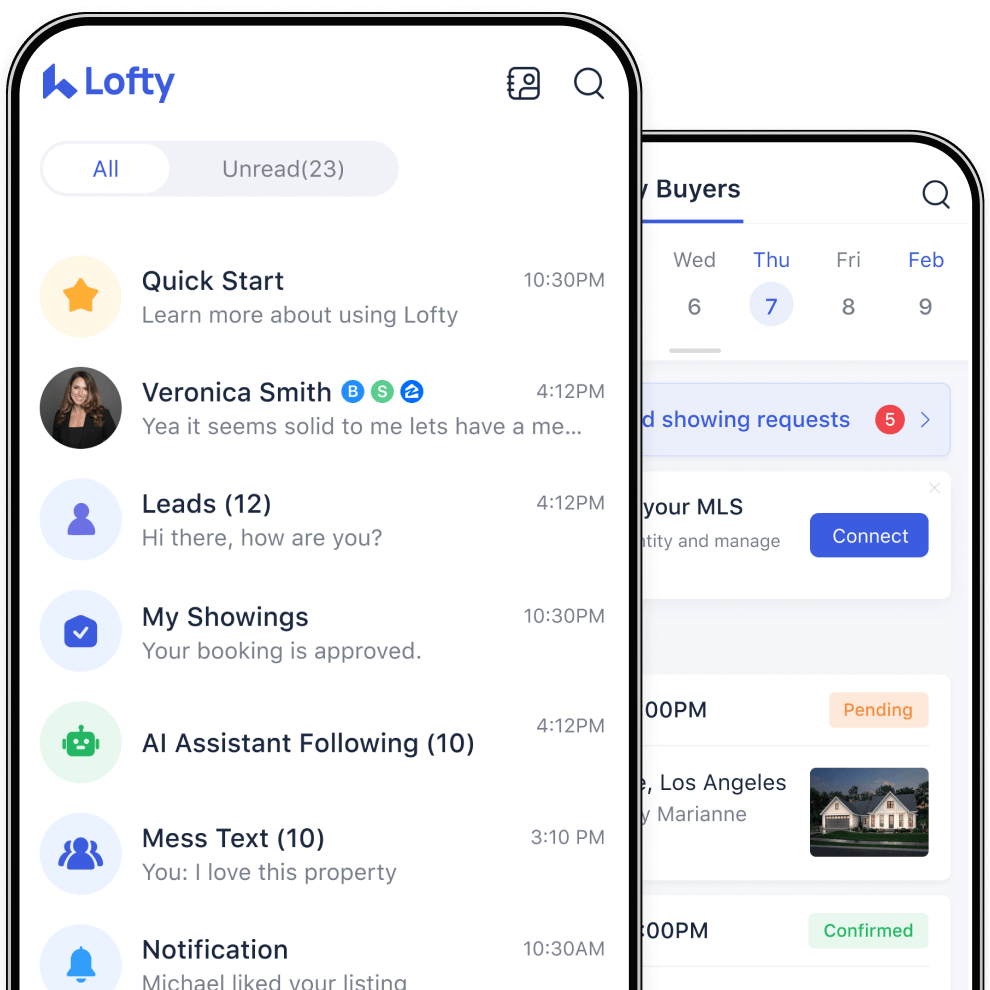9 Key Marketing Strategies for Real Estate Lead Generation

Building a solid real estate lead generation strategy depends on your answer to this question: What do I want to accomplish this year? Your answers may vary depending on market volatility, demand, and even seasonal adjustments, but lead generation will always be the common denominator. Now ask yourself how many leads do I require per month to hit my goals? Once you have this number in mind, you can begin building your lead generation strategy around your target.
For building a real estate brand online, you have a wide variety of options:
- Building an idx website or using a service to build a real estate idx website for you
- Starting a social media campaign on Facebook, LinkedIn, Instagram and so on
- Campaigning by sending email lists and newsletters
- Paying for advertising, such as pay-per-click (PPC) campaigns like Google AdWords, to increase your click-through rate (CTR)
When it comes to real estate marketing, volume is opportunity. Find the channels that can provide you with the most customer contacts in your area. If you are uncertain where to begin, the following four are sound options.
9 Quick Real Estate Lead Generation Strategies.
The development of your marketing strategy requires a determination of the real estate tools potential customers want.
What customers want is universal. They want the most value at the lowest price and to have all information presented in the most digestible form. And what are the most easily digestible formats of real estate marketing?
#1 Photos and Videos.
At the top of every real estate marketer’s list, photos and videos are often the marketing tools that convert viewers into leads. Use high-quality photos that illustrate the best features of a lot or property. You can use the same photographs on a variety of on and offline channels including your real estate website, Zillow, Facebook, Instagram, Pinterest and flyers.
#2 Site Reviews.
The cornerstone of every real estate marketing tool set, site reviews include the basic information a person wants with respect to a property:
- Price
- Size of lot or property
- Details about home or building on the lot or property
- Utilities
- On-site facilities and resources
- Road access
- Views
- Terrain
The more informational categories you include, the more value the review has to potential customers.
#3 Neighborhood Overviews and Landing Pages.
Demographics are the most important aspect of neighborhood overviews, so demographics are a must. But the social, recreational and shopping opportunities around a lot or property are what will interest people the most about a neighborhood overview. So, include information about grocery stores and shopping centers nearby, gyms, coffee shops, parks and golf courses, and major thoroughfares.
#4 Resident Interviews to Drive Referrals.
Three is the ideal number of interviews for a neighborhood testimonial. However, one is far better than none. Neighborhood testimonials should only be three to four sentences and should be general. Include the name and age of the residents interviewed following their quotes. If you can, attach a thumbnail of the interviewee to each quote.
#5 Zillow Leads.
Zillow has a following of over 130 million visits per month. It is the largest real estate website on the Web, so not taking advantage of the quantity of visitors is a mistake. Zillow is a free service to use and the platform is simple to navigate.
Zillow allows for marketing aggregation — mass marketing that treats all customers as a single group that is handled homogeneously — through the use of Zillow’s ad program. The Zillow ad program allows a marketer to select an industry: I am an agent or broker; I am a lender or officer; I am a property manager; or I am a brand investor, then begin building an ad campaign.
#6 Facebook PPC Ads.
Facebook has the most followers of any website. Facebook Business is designed like a giant conversion funnel, which means you have increased odds of turning a view into a lead when you use Facebook.
Facebook, like Zillow, allows you to purchase ads and promote posts. Facebook adds and post promoting has been so successful, there are now analytics companies that work solely on helping companies grade the content of their Facebook ads and post promotion, companies that will ensure you focus on promoting only your top-grade content so you can reap the benefits of things like:
- Lower click per cost (CPC)
- Lower impression cost (CPM)
- Increase interactions with same reach
- Going more viral
- Getting less negative feedback
#7 Internet Data Exchange (IDX) Website.
Stand-alone business websites do not generate a great deal of traffic if you do not have a wizard developer who can somehow manage to get your website atop search engine listings. But an IDX page allows you to connect to multiple listing services (MLS), and it only cost about $40 per month for a basic IDX plan.
To create an IDX site using simple, real-estate convertible templates, try sites like RealGeeks, BoomTown and Zurple. Once your site is built, you simply pay per click. If you really want to generate interest in your IDX site, add a live chat program and always use organic content.
#8 Create IOS and Android Apps and Brand Your Business for Free.
There are now more mobile-only Internet users than there are people accessing the Internet from a desktop. Create an Apple iOS or an Android app to brand your business. It is free.
Creating apps is a template process, which means it is easy. You can create an app that sends your followers updates when you post new listings or make one that shares local real estate news, and a host of other marketing campaigns.
#9 Knock Door to Door and Hand Out Fliers.
There is still great value in offline marketing channels. In fact, in many cases — particularly in rural areas — offline channels may be your best option. They include personal networking — doing business while recreating with potential clients for example; referral marketing — word of mouth about the listings and services you offer; and even billboards and display ads. If you are uncertain as to what strategy to take up first, begin with flyers.
The most tried and true means of generating leads is go door-to-door and hand out flyers. In addition to a sales pitch or some photos and prices of your highest quality listings, your fliers must also include:
- The name of your company
- Your phone number and email
- Your website URL
- Your Facebook, Instagram, LinkedIn and whatever other social media platforms you have attached content to
- Your iOS and App
Once you’ve produced a strategy and built up the tools and channels required to push your listings and generate leads, you can begin fine-tuning your channels and marketing strategy.
